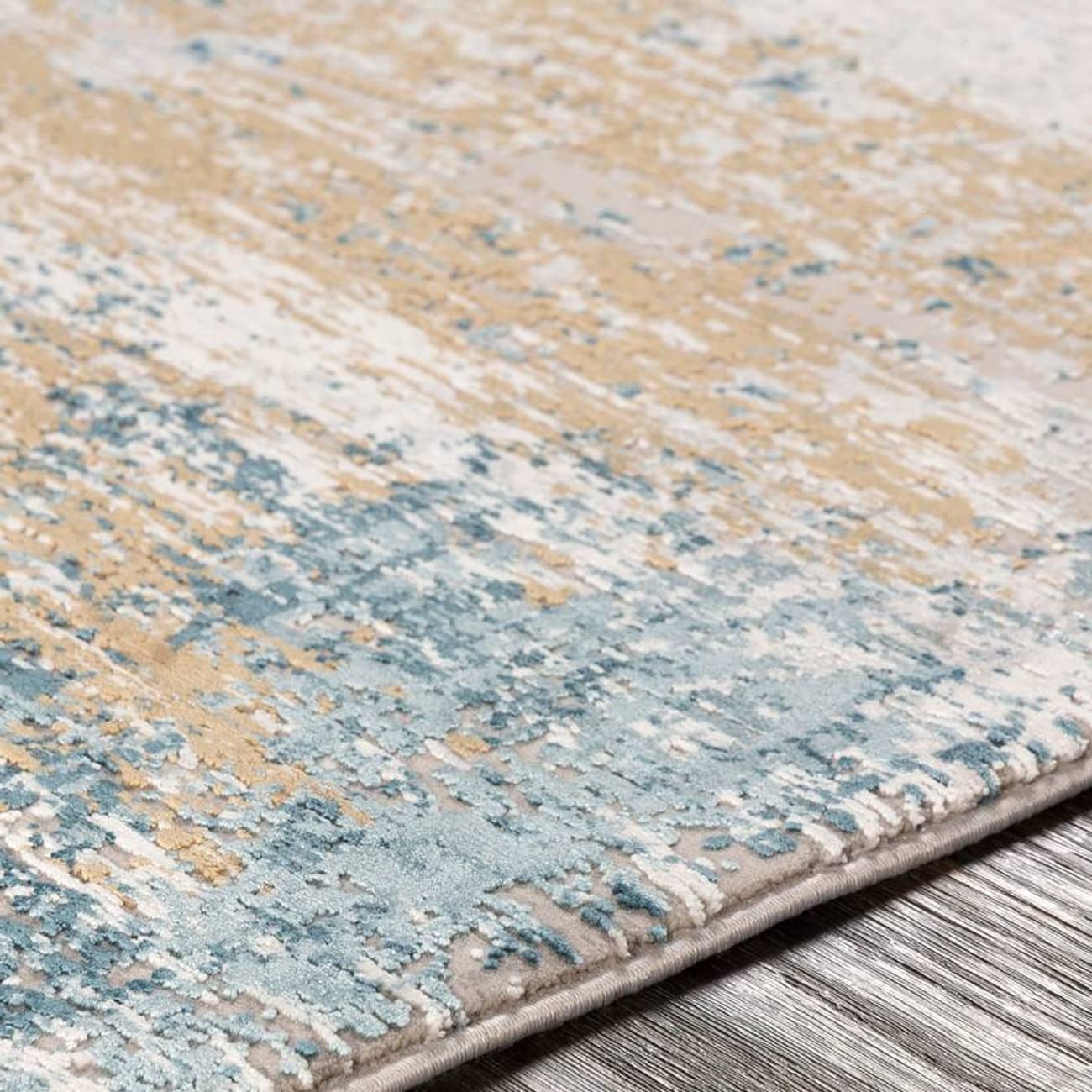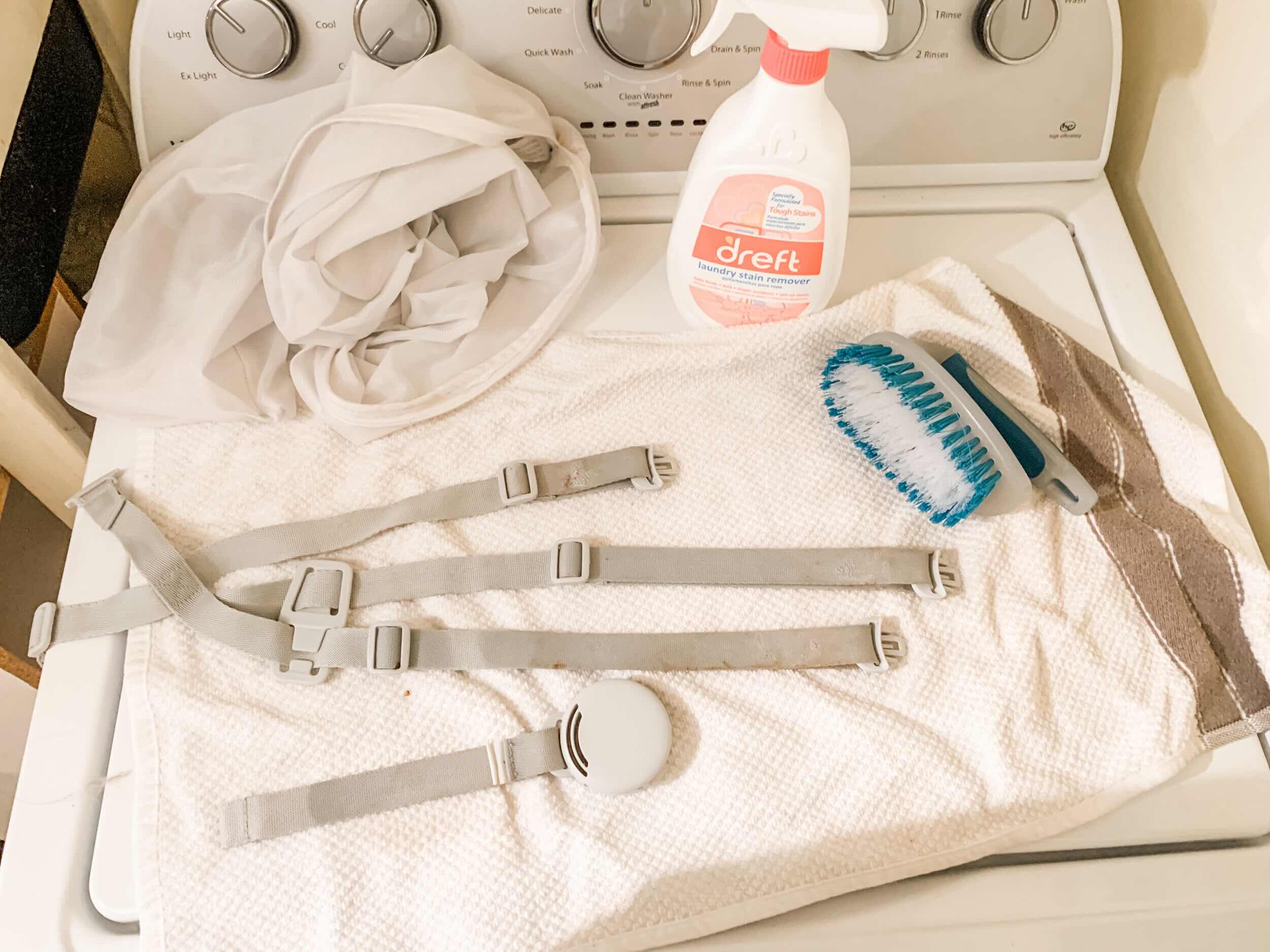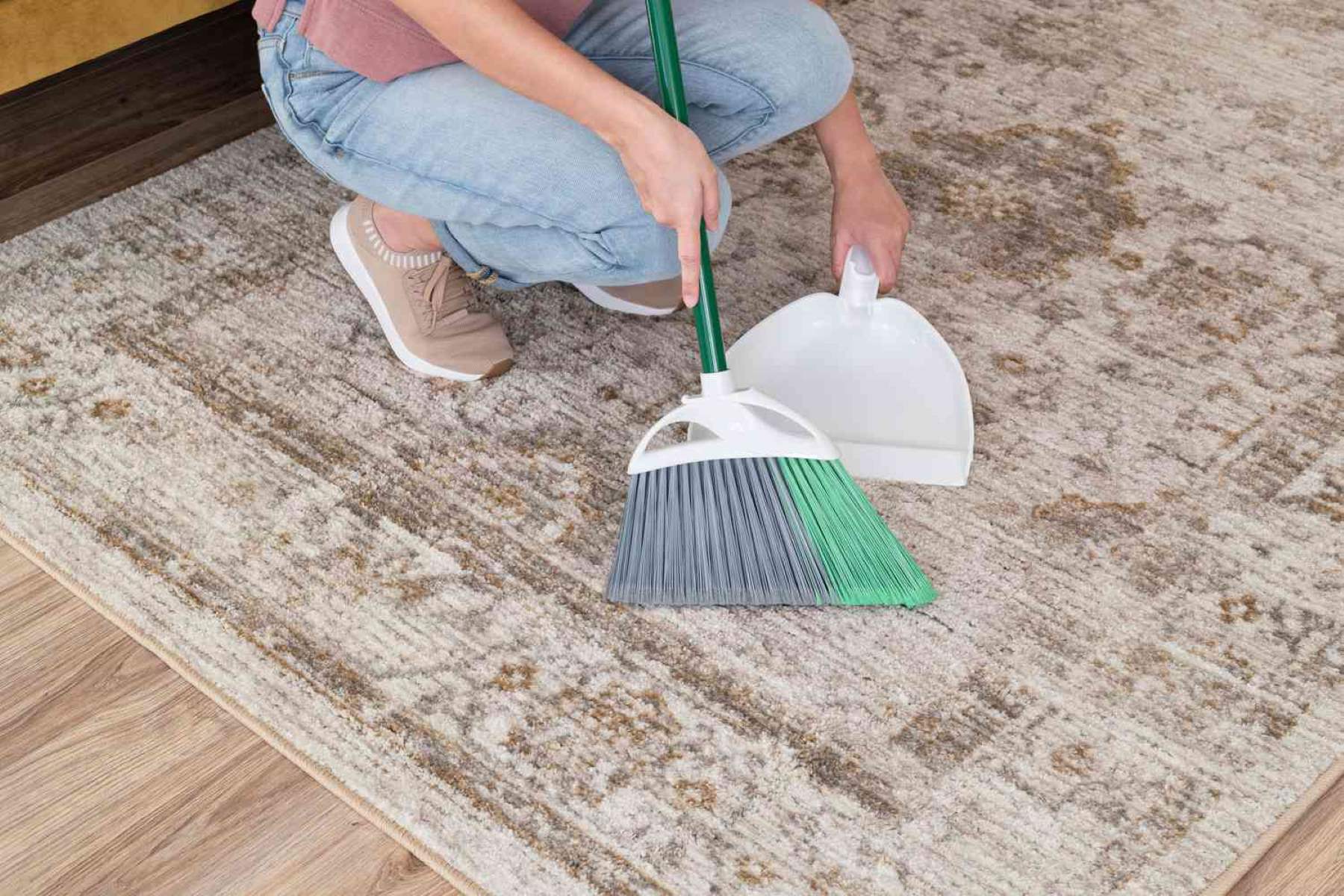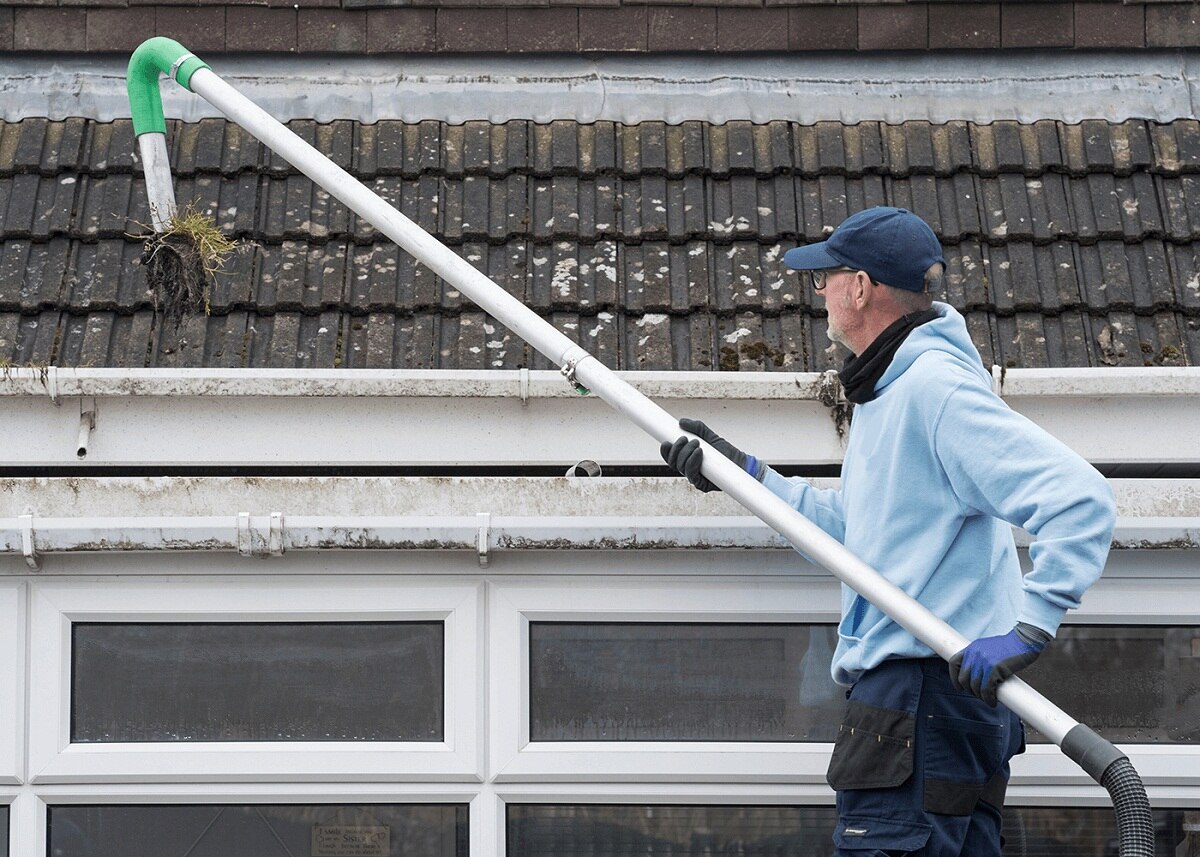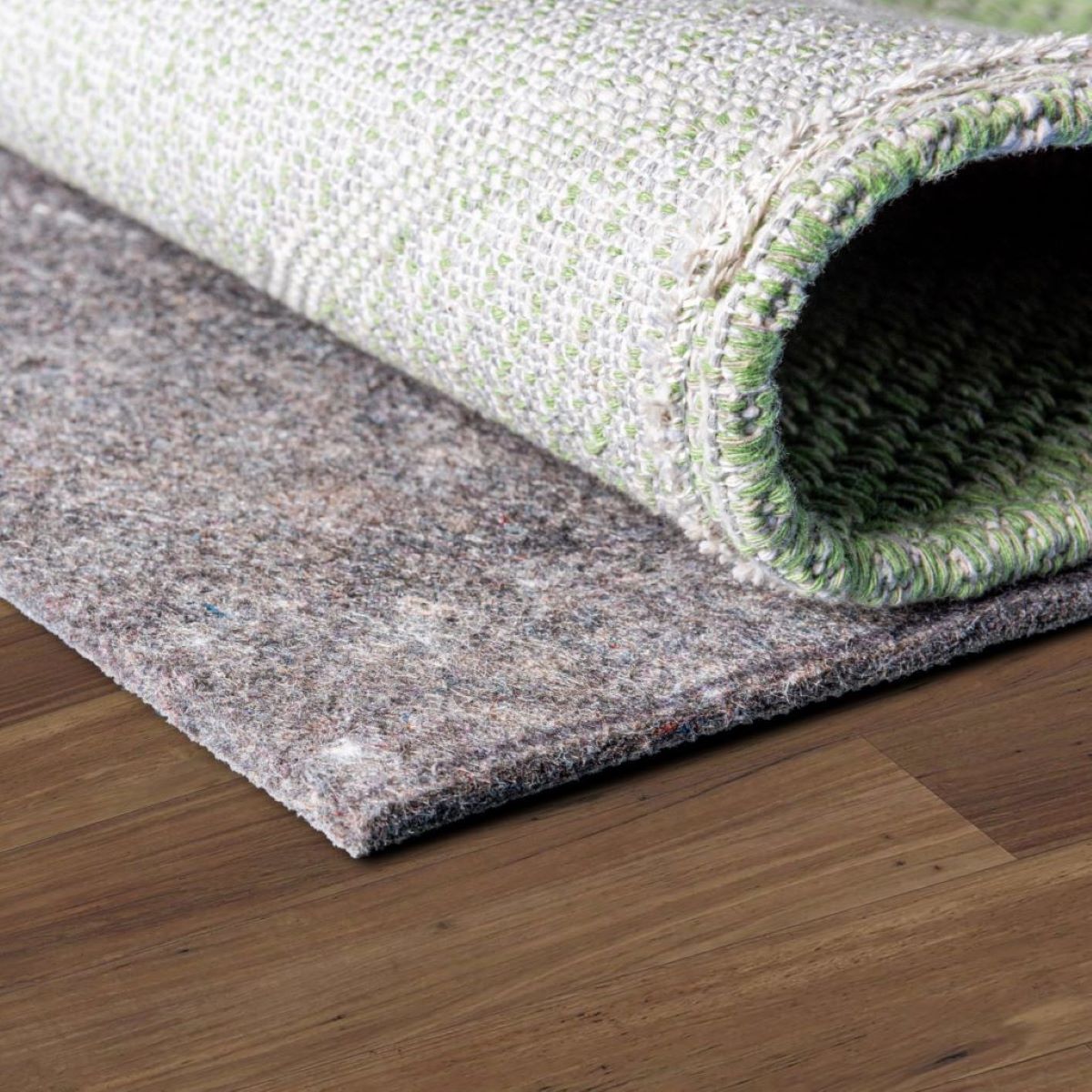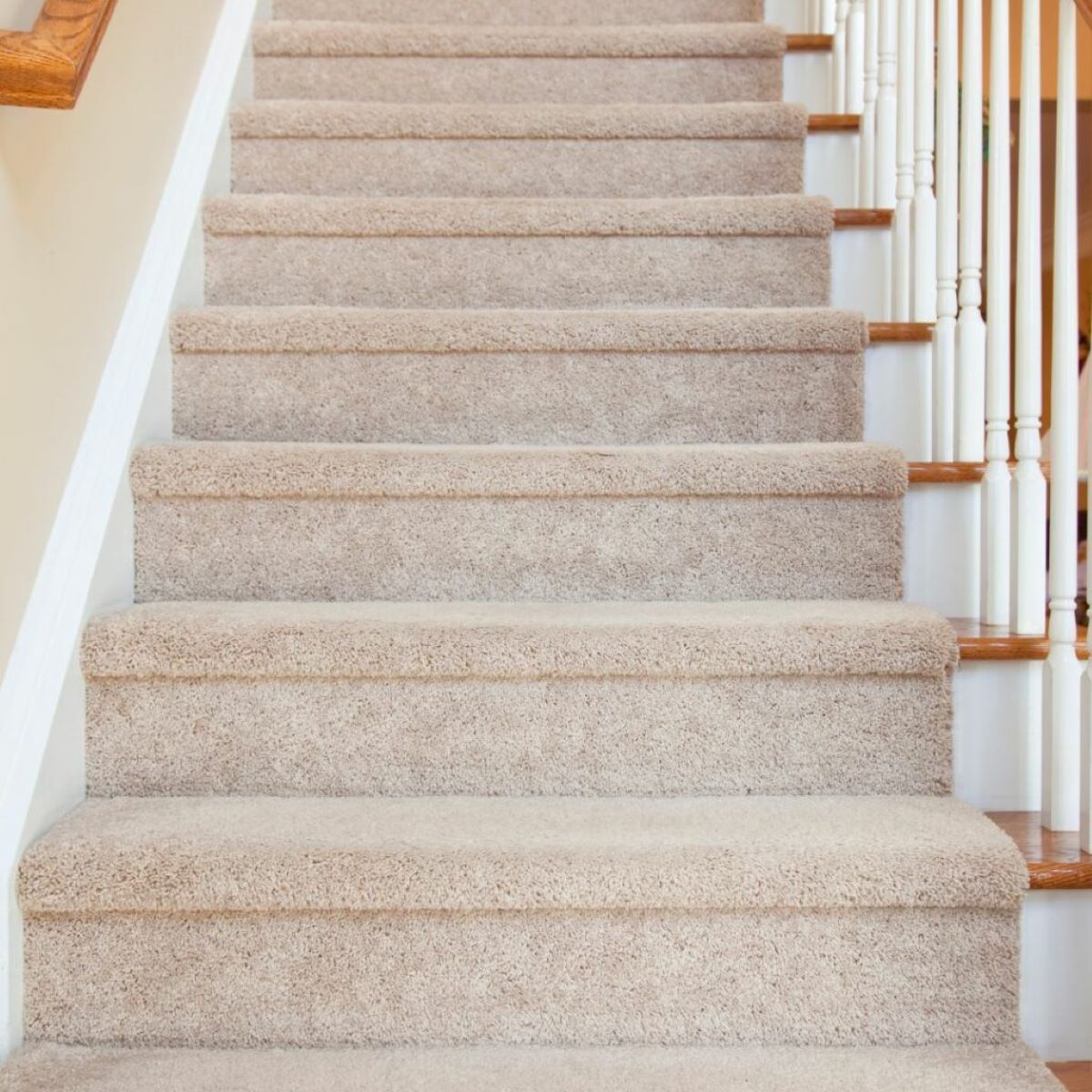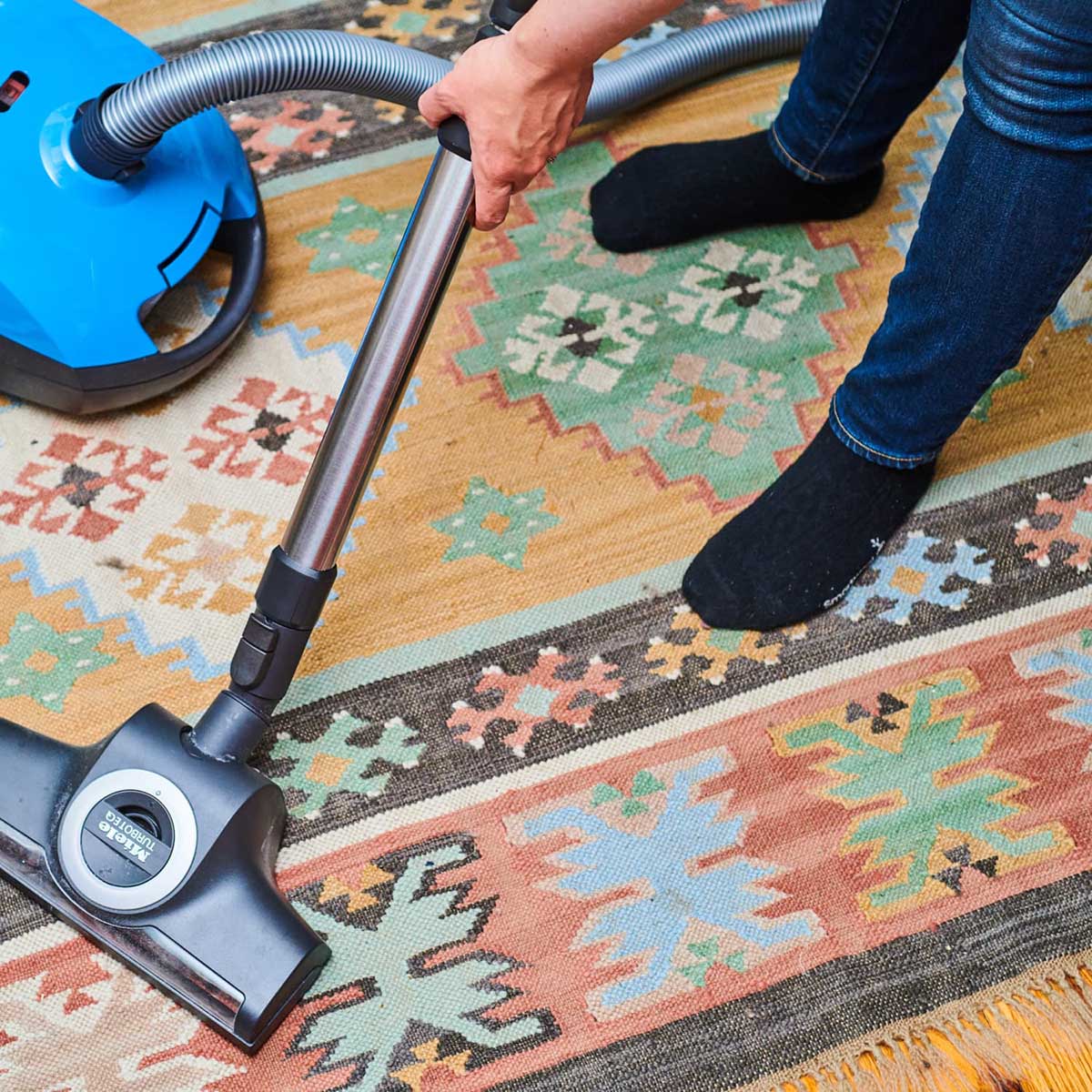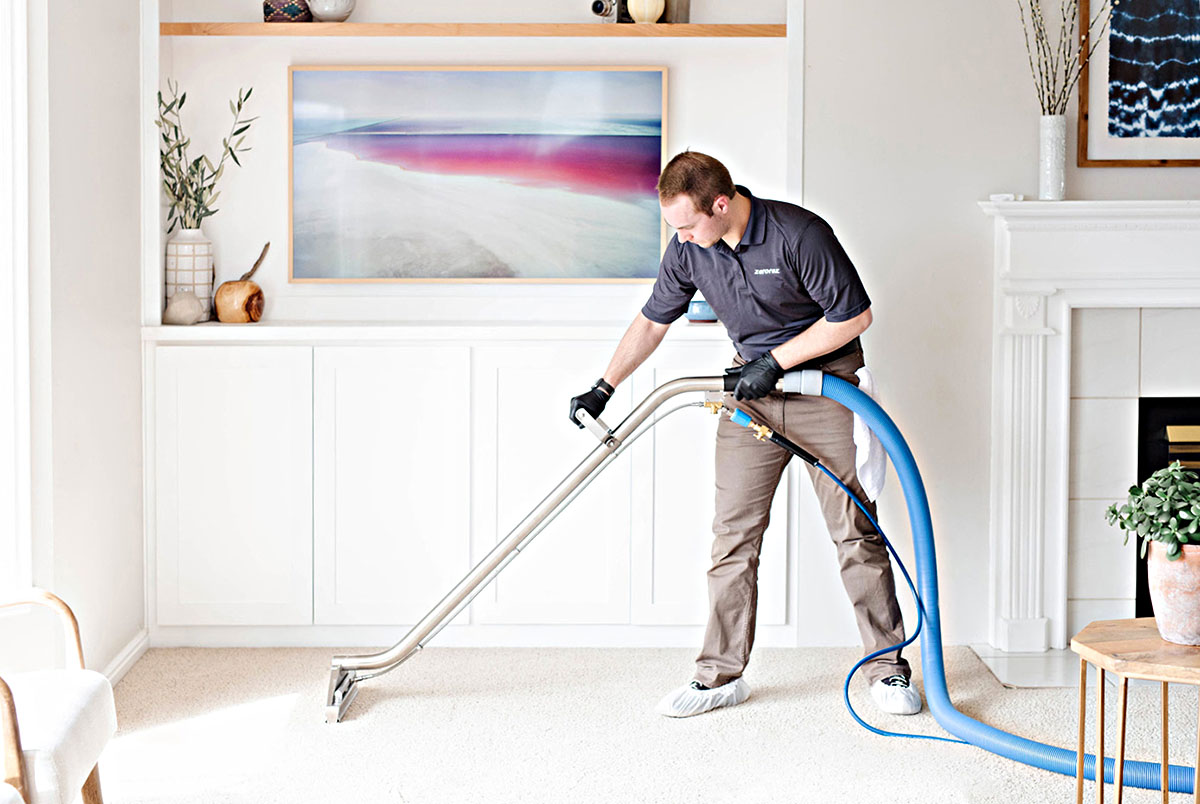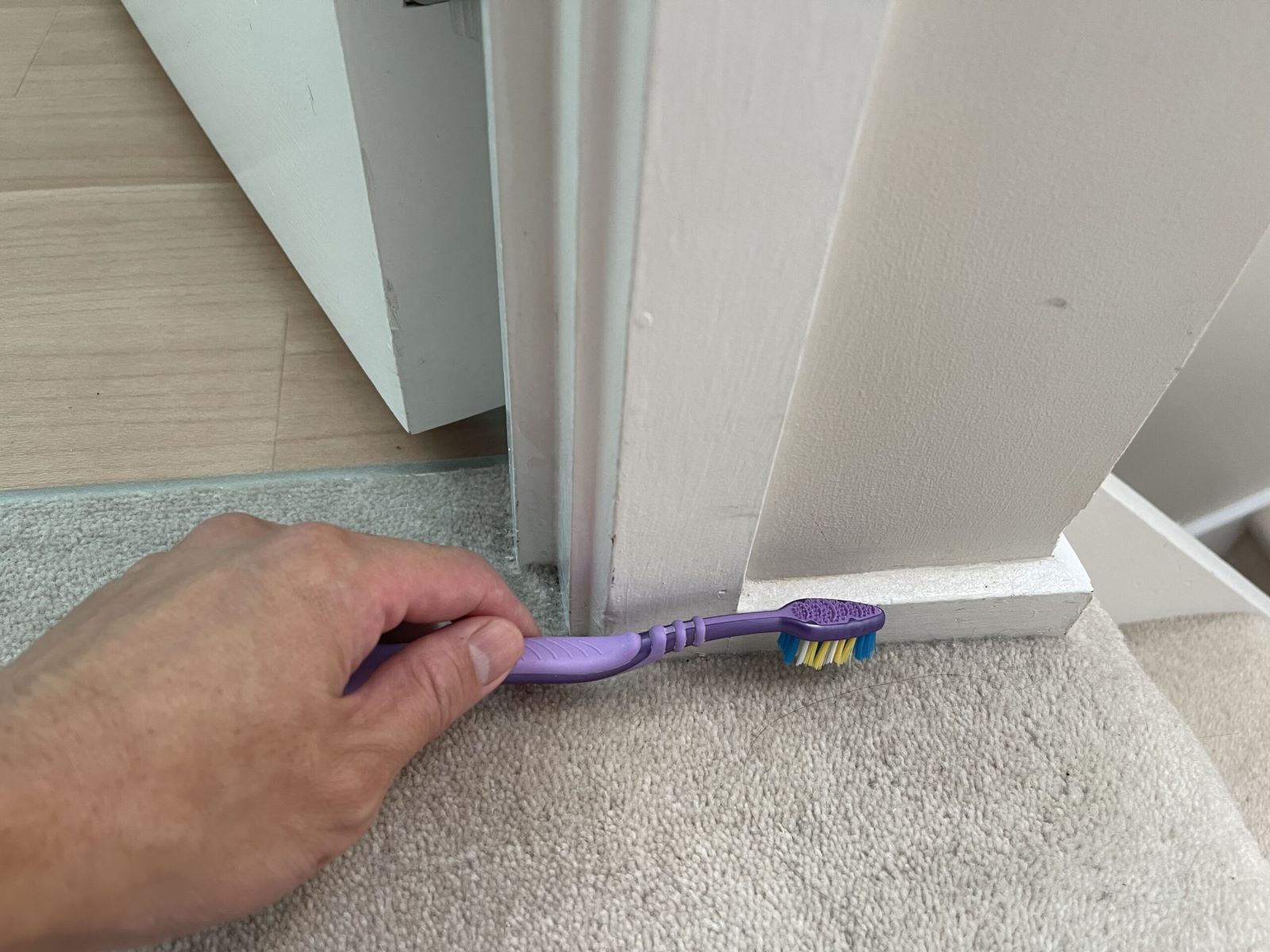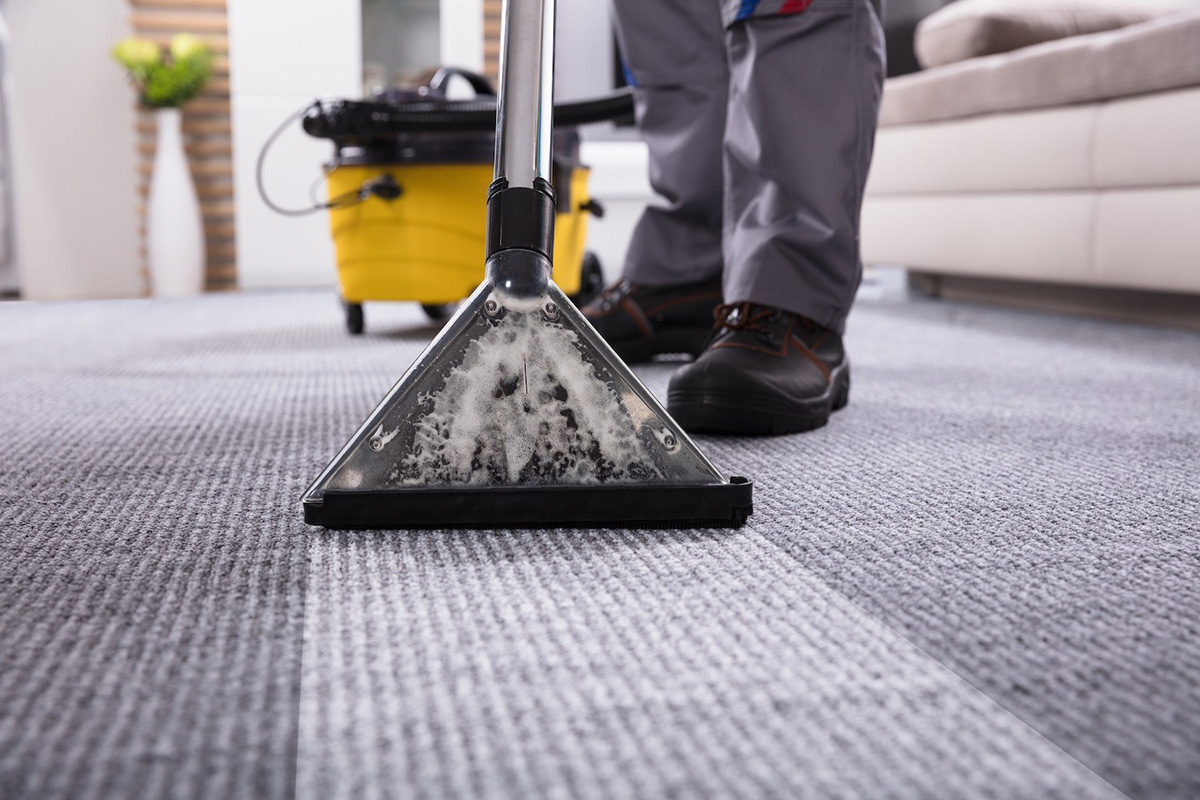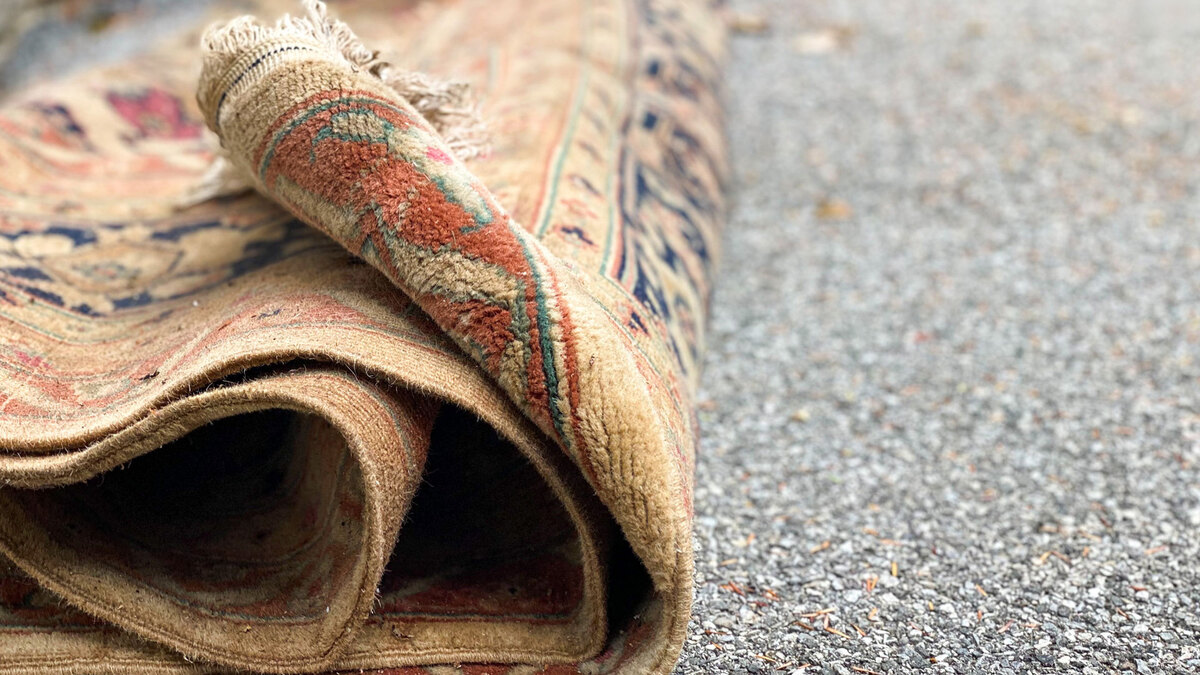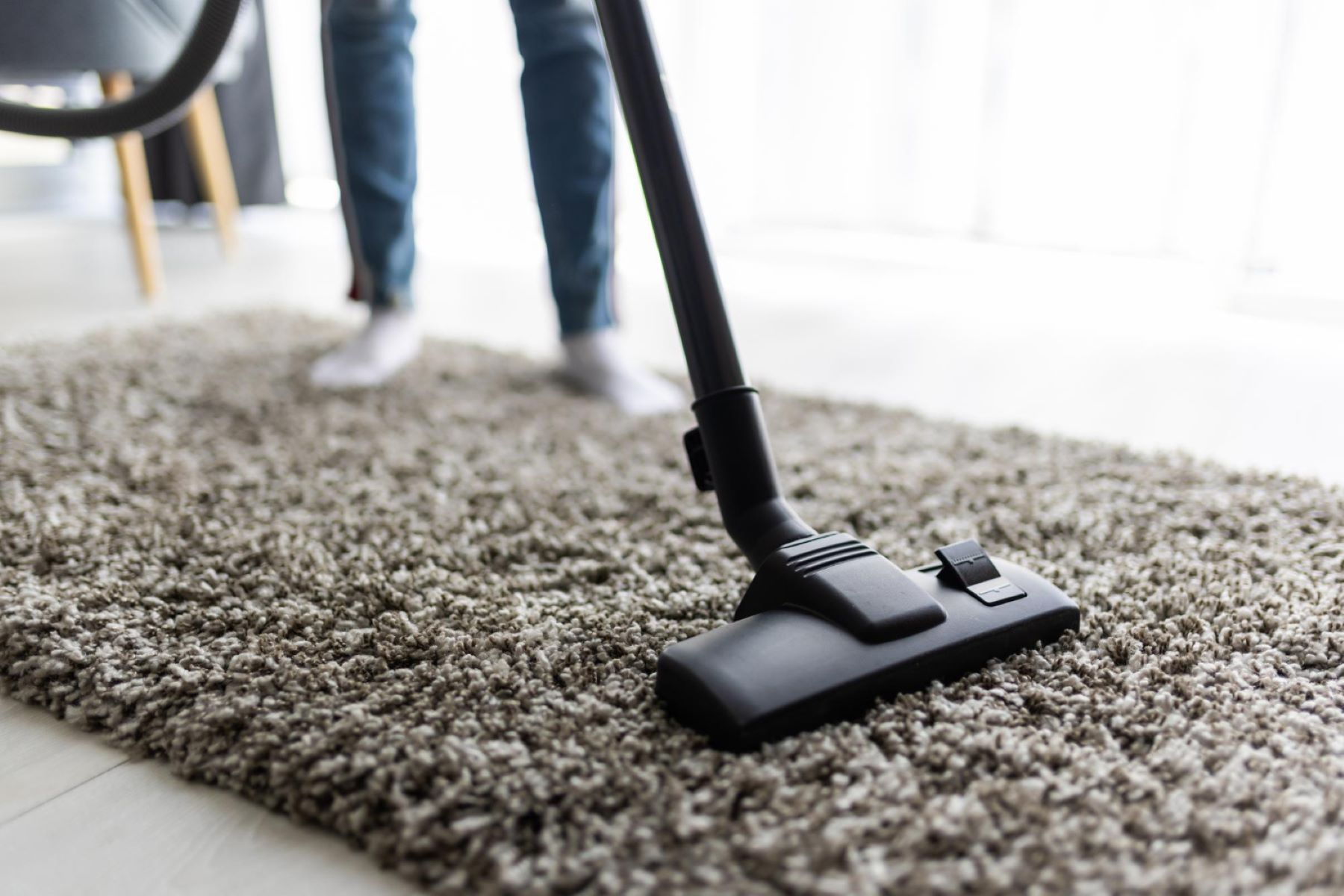

Articles
How To Clean A High-Traffic Carpet Areas
Modified: October 20, 2024
Discover effective techniques for cleaning high-traffic carpet areas in this comprehensive articles. Keep your carpets looking fresh and vibrant with these expert tips.
(Many of the links in this article redirect to a specific reviewed product. Your purchase of these products through affiliate links helps to generate commission for Storables.com, at no extra cost. Learn more)
Introduction
Welcome to our comprehensive guide on how to clean high-traffic carpet areas. Carpets in high-traffic areas such as hallways, living rooms, and entryways tend to accumulate dirt, debris, and stains more quickly than carpets in other parts of the house. Regular cleaning is essential to maintain the appearance and longevity of your carpets and to create a clean and healthy living environment for you and your family.
In this article, we will provide you with step-by-step instructions on how to effectively clean high-traffic carpet areas, ensuring that your carpets look fresh and clean. We will also share valuable tips and tricks to help you tackle common carpet stains and keep your carpets looking their best.
Before we dive into the cleaning process, it’s important to gather the necessary supplies. Having the right tools and cleaning products will make the task easier and more efficient. Make sure you have the following items on hand:
- Vacuum cleaner with attachments
- Stain remover or carpet spot cleaner
- Carpet cleaner or foam
- Bucket of warm water
- Soft brush or sponge
- Clean towels or cloths
- Fan or air mover (optional)
With these supplies ready, you’ll be well-prepared to tackle the cleaning process. So let’s get started with step one: preparing the high-traffic carpet area for cleaning.
Key Takeaways:
- Regular cleaning of high-traffic carpet areas is essential for maintaining appearance and creating a healthy living environment. Follow the 10-step process to effectively clean and refresh your carpets.
- Patience and thoroughness are key to successfully cleaning high-traffic carpet areas. Gather the necessary supplies, prepare the carpet, and follow each step diligently for a fresh and revitalized result.
Step 1: Gather the necessary cleaning supplies
Before you begin cleaning your high-traffic carpet areas, it’s essential to gather all the necessary cleaning supplies. Having the right tools and products will help you achieve the best results in removing dirt, stains, and odors from your carpets. Here’s a list of the supplies you’ll need:
- Vacuum cleaner with attachments: Start by vacuuming the entire carpeted area to remove loose dirt, dust, and debris. Attachments such as a crevice tool or upholstery brush can help you reach corners and edges.
- Stain remover or carpet spot cleaner: High-traffic areas are prone to spills and stains. Having a stain remover or spot cleaner specifically designed for carpets will help you tackle these spots effectively.
- Carpet cleaner or foam: A carpet cleaner or foam is suitable for deep cleaning your high-traffic areas. Look for a product that is safe for your carpet type and that can effectively remove dirt, bacteria, and odors.
- Bucket of warm water: Warm water will be used to dilute the carpet cleaner solution and rinse the carpet later in the process.
- Soft brush or sponge: A soft-bristled brush or sponge will be used to agitate the carpet cleaner or foam and help lift stubborn stains and dirt.
- Clean towels or cloths: Have some clean towels or cloths available to blot excess moisture during the cleaning process.
- Fan or air mover (optional): If you want to speed up the drying process, a fan or air mover can be used to circulate air and remove moisture from the carpet.
Once you have gathered all the necessary supplies, you’re ready to move on to the next step: preparing the high-traffic carpet area for cleaning.
Step 2: Prepare the high-traffic carpet area for cleaning
Before you begin the actual cleaning process, it’s important to prepare the high-traffic carpet area to ensure the best results. Follow these steps to properly prepare the area for cleaning:
- Remove any furniture or obstacles: Clear the area of any furniture or objects that may hinder your access to the carpet. This will allow you to clean the entire surface thoroughly and prevent damage to the furniture.
- Address loose dirt and debris: If there are visible crumbs, dirt, or debris on the carpet, use a handheld vacuum or a brush to remove them. Be thorough in your cleaning and make sure to reach all corners and edges.
- Pre-treat stains: Inspect the carpet for any visible stains or spots. Apply a carpet stain remover or spot cleaner to these areas and gently blot with a clean cloth to lift the stain. Allow the pre-treatment to sit for a few minutes before proceeding.
- Protect surrounding surfaces: If there are nearby surfaces that could be damaged by cleaning solutions or excess moisture, such as wooden floors or baseboards, consider placing towels or plastic sheets as a protective barrier. This will prevent any potential damage and make the cleaning process easier.
By following these preparation steps, you’ll ensure that the high-traffic carpet areas are ready to be thoroughly cleaned. Once the area is prepared, it’s time to move on to step three: vacuuming the carpet to remove loose dirt and debris.
Step 3: Vacuum the carpet thoroughly
Vacuuming is an essential step in cleaning high-traffic carpet areas as it helps remove loose dirt, dust, and debris from the surface. Follow these steps to effectively vacuum your carpet:
- Prepare the vacuum cleaner: Ensure that the vacuum cleaner is in proper working condition. Check the bag or canister to make sure it’s not full, and clean or replace the filter if necessary. Attach the appropriate cleaning head or attachment for carpet cleaning.
- Start from the furthest corner: Begin vacuuming from the furthest corner of the carpeted area and work your way towards the exit. This way, you won’t walk on areas you’ve already cleaned, and you can easily maneuver around the room.
- Vacuum in overlapping strokes: Move the vacuum cleaner in slow, overlapping strokes across the carpet. This will ensure that you cover the entire area and pick up as much dirt and debris as possible.
- Pay attention to corners and edges: Use the crevice tool or the edge cleaning attachment to vacuum along the corners and edges of the carpet. These areas tend to accumulate more dirt and debris, so give them extra attention.
- Go over heavily soiled areas: For high-traffic areas with visible dirt or stains, make additional passes with the vacuum cleaner. This will help lift stubborn dirt and prepare the carpet for the deeper cleaning steps.
- Empty or clean the vacuum: Once you have finished vacuuming, empty or clean the vacuum cleaner. This will ensure that it’s ready for future use and prevent any unpleasant odors or clogs.
Vacuuming should be done regularly, especially in high-traffic areas, to prevent dirt and debris from embedding further into the carpet fibers. Once you have thoroughly vacuumed the carpet, you can move on to step four: treating stains and spots.
Step 4: Treat stains and spots
High-traffic carpet areas are prone to stains and spots caused by spills, dirt, or pet accidents. Treating these stains promptly is crucial to prevent them from becoming permanent. Follow these steps to effectively treat stains and spots on your carpet:
- Identify the type of stain: Before you begin treating the stain, it’s important to identify the type of stain you’re dealing with. This will help determine the appropriate cleaning method and products to use.
- Blot the stain: If the stain is fresh, start by blotting it with a clean, absorbent cloth or paper towel to remove any excess liquid or debris. Do not rub the stain, as this could cause it to spread or penetrate deeper into the carpet fibers.
- Choose the correct stain remover: Select a stain remover or spot cleaner that is specifically designed for the type of stain you’re dealing with. For example, use a grease or oil stain remover for greasy stains, or a wine and coffee stain remover for beverage stains.
- Apply the stain remover: Follow the instructions on the stain remover product and apply it directly to the stained area. Use a clean cloth or sponge to gently blot and work the stain remover into the carpet fibers. Avoid oversaturating the carpet.
- Allow the stain remover to sit: Depending on the stain remover product, you may need to let it sit on the stain for a few minutes. This will give it time to penetrate and break down the stain for easier removal.
- Blot and lift the stain: After allowing the stain remover to sit, use a clean cloth or sponge to blot the area, working from the outer edges of the stain towards the center. This will help lift the stain and remove it from the carpet fibers.
- Rinse with clean water: Once the stain is lifted, rinse the treated area with clean water to remove any residue from the stain remover. Blot with a clean towel or cloth to absorb the excess moisture.
- Repeat if necessary: For stubborn or set-in stains, you may need to repeat the stain treatment process. Be patient and persistent, and continue treating the stain until it is visibly lighter or completely gone.
By following these steps, you can effectively treat stains and spots on your high-traffic carpet areas. Once you’ve dealt with the stains, you’re ready to move on to step five: applying a carpet cleaner or foam to deep clean the carpet.
Step 5: Apply a carpet cleaner or foam
To achieve a deep clean in your high-traffic carpet areas, it’s important to use a carpet cleaner or foam. These products are designed to penetrate the carpet fibers and lift embedded dirt and grime. Follow these steps to apply a carpet cleaner or foam to your carpet:
- Read and follow the product instructions: Before using a carpet cleaner or foam, carefully read and follow the instructions provided by the manufacturer. Each product may have specific guidelines and recommendations for optimal results.
- Prepare the solution: Dilute the carpet cleaner according to the instructions on the packaging. This may involve mixing the cleaner with warm water in a bucket or using a pre-mixed solution.
- Test in a small, inconspicuous area: Prior to applying the cleaner to the entire high-traffic carpet area, test it in a small, inconspicuous spot to ensure compatibility and prevent any potential damage or discoloration.
- Apply the cleaner or foam: Following the product instructions, apply the carpet cleaner or foam to the high-traffic areas of the carpet. Use an appropriate applicator or spraying device to evenly distribute the cleaner across the surface.
- Work the cleaner into the carpet: Use a soft brush or sponge to work the cleaner into the carpet fibers. This helps to agitate and loosen dirt and debris that may be embedded deep within the carpet.
- Pay extra attention to heavily soiled areas: If there are any particularly dirty or stained spots, spend additional time and effort scrubbing those areas. Be gentle, yet thorough, to ensure effective cleaning without causing damage to the carpet.
- Allow the cleaner to sit: Give the cleaner some time to penetrate and break down dirt and grime. Depending on the product, this may range from a few minutes to several hours. Refer to the instructions for the recommended duration.
- Avoid over-saturating the carpet: To prevent excessive moisture and potential damage, avoid over-saturating the carpet with the cleaner or foam. Use the recommended amount and apply it evenly across the surface.
By following these steps, you can effectively apply a carpet cleaner or foam to deep clean your high-traffic carpet areas. Once the cleaner has had time to work its magic, it’s time to move on to step six: scrubbing the carpet to further loosen dirt and stains.
Regular vacuuming is key to keeping high-traffic carpet areas clean. Use a high-quality vacuum with strong suction and be sure to vacuum at least once a week to remove dirt and debris.
Step 6: Scrub the carpet using a brush or sponge
After applying a carpet cleaner or foam, it’s important to scrub the carpet to further loosen dirt, stains, and grime. This step helps to agitate the fibers and ensure a deep and thorough cleaning. Follow these steps to effectively scrub your high-traffic carpet areas:
- Select a suitable brush or sponge: Choose a soft-bristled brush or sponge that is appropriate for your carpet type. Avoid using harsh brushes or abrasive materials that could cause damage or unravel the carpet fibers.
- Dip the brush or sponge in clean water: Wet the brush or sponge with clean water to moisten the bristles or foam. This will help create a mild cleaning solution to work with the carpet cleaner or foam already applied to the carpet.
- Start scrubbing in a gentle circular motion: Begin scrubbing the carpet using a gentle circular motion. Focus on the high-traffic areas and any visible stains or spots. Apply light pressure and let the bristles or foam do the work.
- Work in small sections: Divide the carpeted area into smaller sections and scrub one section at a time. This way, you can ensure thorough cleaning without missing any spots.
- Pay extra attention to stubborn stains: For stubborn stains that have not completely lifted with the carpet cleaner or foam, spend additional time scrubbing those areas. Apply more pressure and continue scrubbing until the stain is visibly lighter or is completely removed.
- Do not oversaturate the carpet: Avoid oversaturating the carpet with water or cleaning solution. Use minimal moisture and ensure that the brush or sponge is only moist enough to help loosen the dirt and stains.
- Periodically rinse the brush or sponge: Rinse the brush or sponge with clean water periodically to remove any dirt, debris, or excess cleaning solution. This will prevent cross-contamination and ensure effective cleaning.
- Continue scrubbing until satisfied: Scrub the carpet until you are satisfied with the results. If necessary, repeat the scrubbing process in heavily soiled areas or on stubborn stains.
By following these steps, you can effectively scrub your high-traffic carpet areas and ensure a deeper clean. Once you have finished scrubbing, it’s time to move on to step seven: rinsing the carpet thoroughly.
Step 7: Rinse the carpet thoroughly
Rinsing the carpet is an essential step in the cleaning process, as it helps to remove any residual cleaning solution, dirt, and debris from the fibers. Follow these steps to rinse your high-traffic carpet areas thoroughly:
- Prepare a bucket of clean water: Fill a bucket with clean, warm water. This will be used for rinsing the carpet and removing any remaining cleaning solution.
- Dip a clean sponge or cloth in the water: Take a clean sponge or cloth and dip it into the bucket of water. Wring out any excess moisture to ensure that it is damp, but not soaked.
- Start rinsing from one corner: Begin rinsing the carpet from one corner of the room, working your way towards the exit. This will prevent you from stepping on the rinsed areas and re-soiling the carpet.
- Apply the damp sponge or cloth to the carpet: Gently rub the damp sponge or cloth over the carpet, focusing on the areas that were treated with the carpet cleaner or foam. This will help remove any remaining residue and lift dirt and grime from the fibers.
- Change the water if necessary: If the water in the bucket becomes dirty or cloudy, empty it out and refill it with fresh, clean water. This will ensure that you’re rinsing the carpet with clean water throughout the process.
- Wring out excess moisture: Periodically wring out the sponge or cloth to release any excess moisture. This will prevent the carpet from becoming overly wet during the rinsing process.
- Continue rinsing the entire carpet: Repeat the rinsing process for the entire high-traffic carpet area, ensuring that all treated areas are thoroughly rinsed. Take your time and be thorough in your rinsing efforts.
- Allow the carpet to air dry: After rinsing, allow the carpet to air dry completely. Open windows or turn on fans to promote airflow and expedite the drying process. Avoid walking on the carpet until it is fully dry to prevent re-soiling.
By following these steps, you can effectively rinse your high-traffic carpet areas and remove any residuals from the cleaning process. Once the carpet is thoroughly rinsed, it’s time to move on to step eight: removing excess moisture.
Step 8: Remove excess moisture
After rinsing your high-traffic carpet areas, it’s important to remove any excess moisture to prevent prolonged dampness and potential damage. Follow these steps to effectively remove excess moisture from your carpet:
- Use clean towels or cloths: Grab a few clean towels or cloths and gently press them against the damp areas of the carpet. Apply gentle pressure and allow the towels to absorb as much moisture as possible.
- Blot, don’t rub: When removing excess moisture, avoid rubbing or scrubbing the carpet, as this can push the moisture deeper into the fibers. Instead, lightly blot the area with the towels to soak up the moisture.
- Change towels as needed: As the towels become saturated, replace them with fresh, dry towels. This will ensure that you’re absorbing as much moisture as possible and preventing the transfer of dampness back into the carpet.
- Apply gentle pressure: Use your body weight or a heavy object to apply gentle pressure to the towels as you blot the carpet. This will help them absorb more moisture effectively.
- Continue blotting until the towels come out nearly dry: Keep blotting the damp areas of the carpet until the towels come out nearly dry. This indicates that you have removed the majority of the excess moisture.
- Avoid excessive drying methods: While it may be tempting to use high heat or excessive airflow to speed up the drying process, it’s important to avoid these methods. They can potentially damage the carpet fibers and cause shrinkage or discoloration.
- Utilize air circulation: Instead of using excessive drying methods, promote natural air circulation by opening windows, using fans, or turning on the air conditioner. This will help to gradually dry the carpet without causing any harm.
- Monitor the drying process: Keep an eye on the carpet as it dries and ensure that the moisture is being adequately absorbed and evaporated. Avoid walking on the carpet until it is completely dry to prevent re-soiling and potential slips or falls.
By following these steps, you can effectively remove excess moisture from your high-traffic carpet areas, helping to prevent extended drying times and potential damage. Once the majority of the moisture is removed, you can proceed to step nine: allowing the carpet to dry completely.
Read more: How To Clean Chandeliers On High Ceiling
Step 9: Allow the carpet to dry completely
Allowing your high-traffic carpet areas to dry completely is crucial to prevent moisture-related issues and ensure a clean and fresh result. Follow these steps to effectively dry your carpet:
- Ensure good air circulation: Open windows or use fans to promote air circulation in the room. This will help speed up the drying process by allowing the moisture in the carpet to evaporate.
- Avoid walking on the carpet: While the carpet is drying, avoid walking on it as much as possible. Walking on a damp carpet can disrupt the fibers and potentially lead to re-soiling or damage.
- Use a dehumidifier (optional): If the room has high humidity levels, consider using a dehumidifier to help remove excess moisture from the air. This will aid in faster drying and reduce the risk of mold or mildew growth.
- Monitor the drying progress: Keep an eye on the carpet to assess its drying progress. The time it takes for the carpet to dry will depend on various factors such as humidity levels, carpet thickness, and ventilation. Be patient and allow sufficient time for drying.
- Check for dampness: After a few hours, check the carpet for any remaining dampness. Gently touch the carpet’s surface with your hand to feel for any moisture. If it feels damp, continue the drying process until the carpet is completely dry.
- Use a fan or air mover: If necessary, you can use a fan or air mover to direct air towards the carpet to expedite the drying process. Position the fan or air mover at a suitable distance to avoid excessive airflow that could damage the carpet.
- Check for odor or mold: Once the carpet is fully dry, check for any lingering odors or signs of mold. If you detect any musty smell or notice mold growth, consult professional cleaners or mold remediation experts to address the issue.
By following these steps, you can ensure that your high-traffic carpet areas dry thoroughly, allowing you to enjoy a clean and fresh carpet. Once the carpet is completely dry, you can proceed to step ten: vacuuming once again to remove any loosened debris or particles.
Step 10: Vacuum once again
After the high-traffic carpet areas have dried completely, it’s important to vacuum them once again. This final step will help to remove any loosened debris, particles, or fibers that may have surfaced during the cleaning process. Follow these steps to effectively vacuum your carpet for the final time:
- Ensure the carpet is fully dry: Before vacuuming, make sure the carpet is completely dry to prevent any moisture from being absorbed by the vacuum cleaner. Dry carpet will ensure optimal vacuuming performance.
- Prepare the vacuum cleaner: Check that the vacuum cleaner has an empty bag or clean canister, and ensure the brush or attachment is clean and free of debris. This will ensure efficient and effective vacuuming.
- Start from the furthest corner: Begin vacuuming from the furthest corner of the room, working your way towards the exit. This will prevent you from stepping on areas that have already been vacuumed and keep the carpet clean.
- Use overlapping strokes: Move the vacuum cleaner in slow and overlapping strokes to ensure thorough coverage of the high-traffic carpet areas. This will help to remove any remaining dirt, debris, or particles.
- Pay attention to corners and edges: Use the crevice tool or edge cleaning attachment to vacuum along the corners and edges of the carpet. These areas tend to accumulate more dirt, so give them extra attention.
- Make multiple passes: For heavily trafficked areas or areas with visible dirt, make multiple passes with the vacuum cleaner to ensure thorough cleaning. This will help to lift any deep-seated dirt and restore the carpet’s appearance.
- Empty the vacuum cleaner: Once you have finished vacuuming, empty the vacuum cleaner’s bag or canister and clean the filter, if necessary. This will ensure that the vacuum cleaner is ready for future use.
By following these steps, you can complete the final stage of the cleaning process by thoroughly vacuuming the high-traffic carpet areas. This will leave your carpets looking fresh, clean, and ready to withstand the daily wear and tear. Congratulations on successfully cleaning your high-traffic carpet areas!
Conclusion
Cleaning high-traffic carpet areas doesn’t have to be a daunting task. By following the ten steps outlined in this guide, you can effectively clean and refresh your carpets to maintain their appearance and longevity. Regular cleaning will not only make your carpets look better but also contribute to a healthier living environment for you and your family.
Throughout the cleaning process, we emphasized the importance of gathering the necessary supplies, preparing the carpet, vacuuming, treating stains, applying a carpet cleaner or foam, scrubbing, rinsing, removing excess moisture, allowing for complete drying, and vacuuming once again. Each step plays a crucial role in achieving a thorough and effective clean.
Remember to approach the cleaning process with patience. Take your time to ensure that each step is done properly and that you have addressed any stubborn stains or deeply embedded dirt. Additionally, it’s important to follow the instructions provided by the cleaning products and to test any new cleaning solutions in an inconspicuous area to avoid any unwanted damage or discoloration.
By implementing these steps and incorporating regular carpet maintenance into your cleaning routine, you can extend the life of your high-traffic carpet areas and keep them looking their best for years to come. A clean and well-maintained carpet enhances the overall aesthetics of your home and provides a comfortable and welcoming space for you and your loved ones.
We hope that this comprehensive guide has provided you with valuable insights and practical tips to effectively clean your high-traffic carpet areas. Enjoy the fresh and clean feel of your revitalized carpets!
Frequently Asked Questions about How To Clean A High-Traffic Carpet Areas
Was this page helpful?
At Storables.com, we guarantee accurate and reliable information. Our content, validated by Expert Board Contributors, is crafted following stringent Editorial Policies. We're committed to providing you with well-researched, expert-backed insights for all your informational needs.
